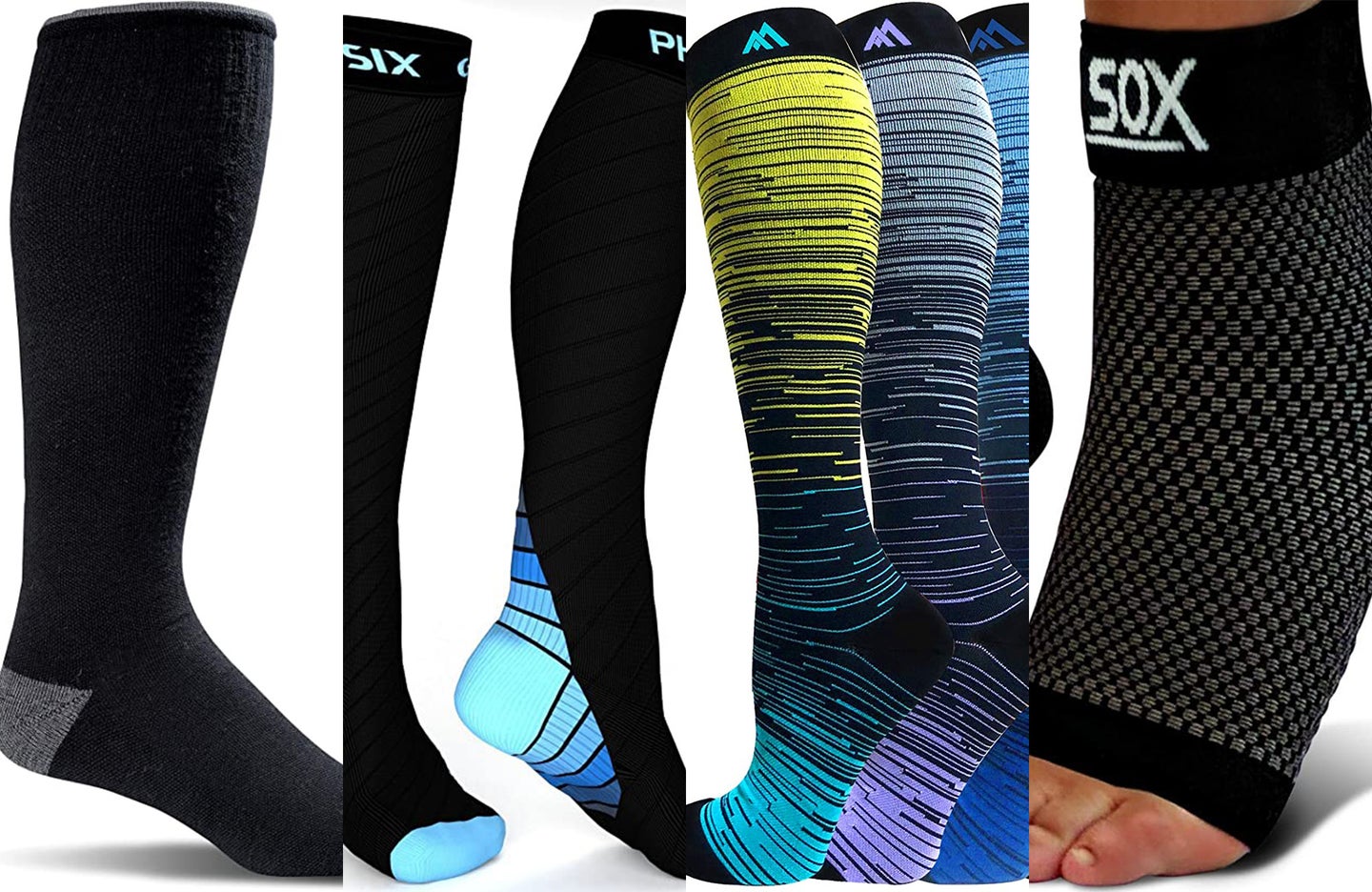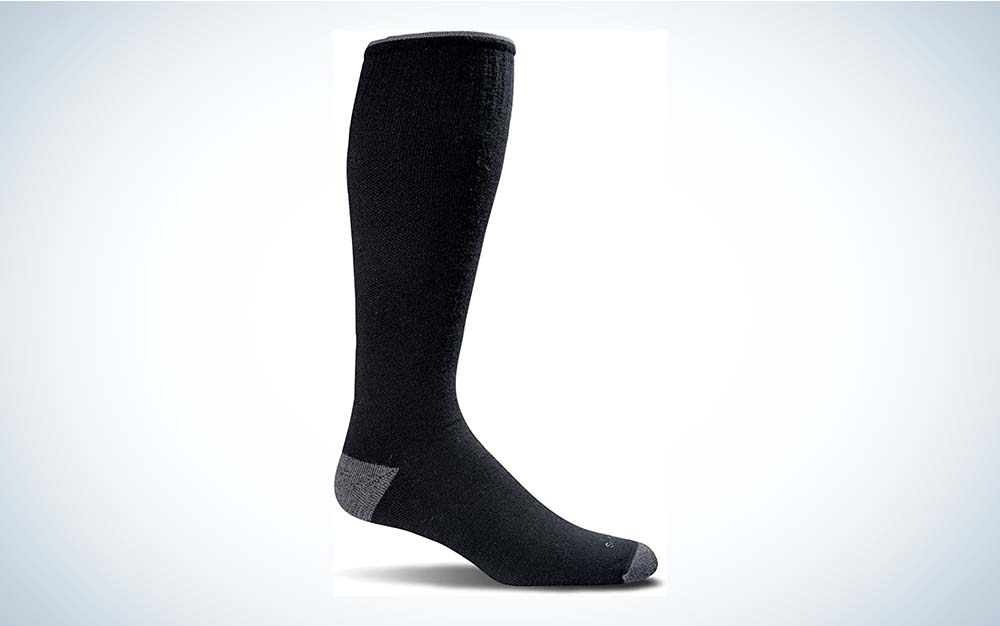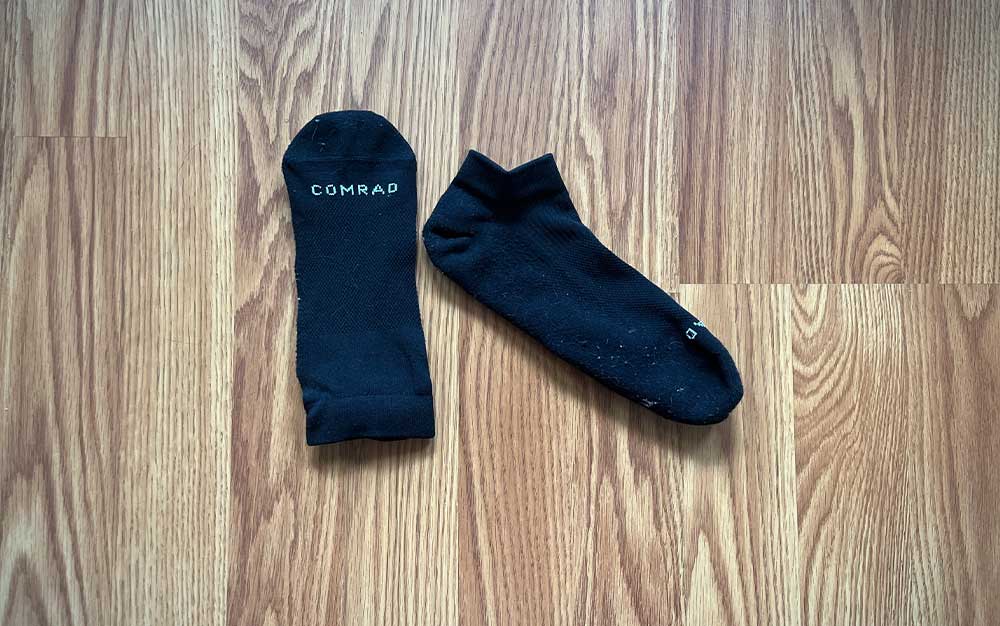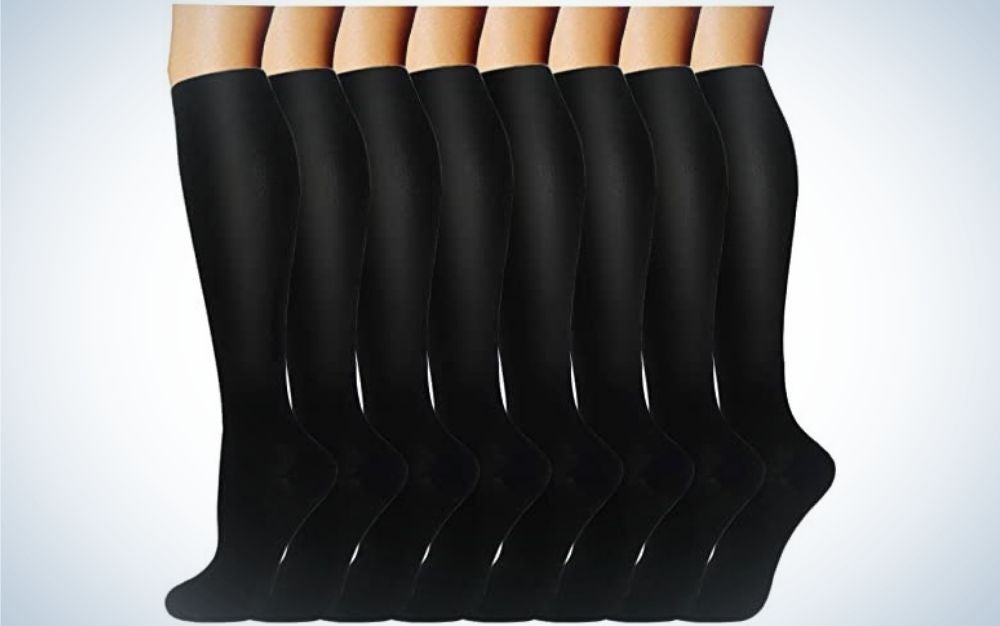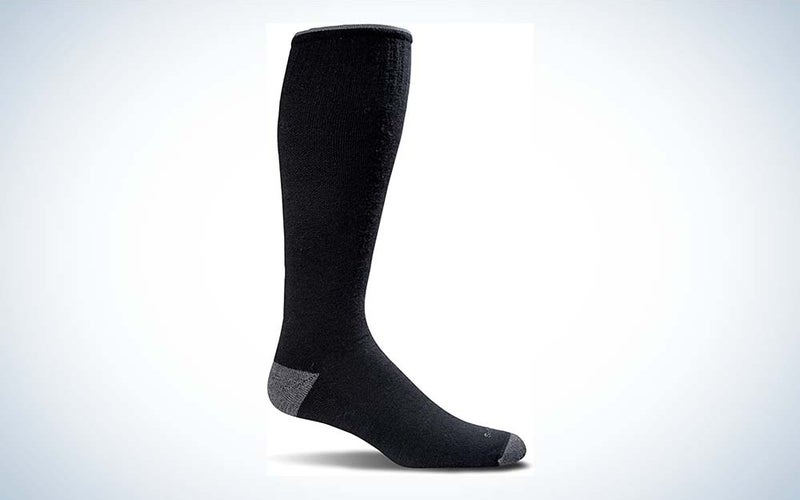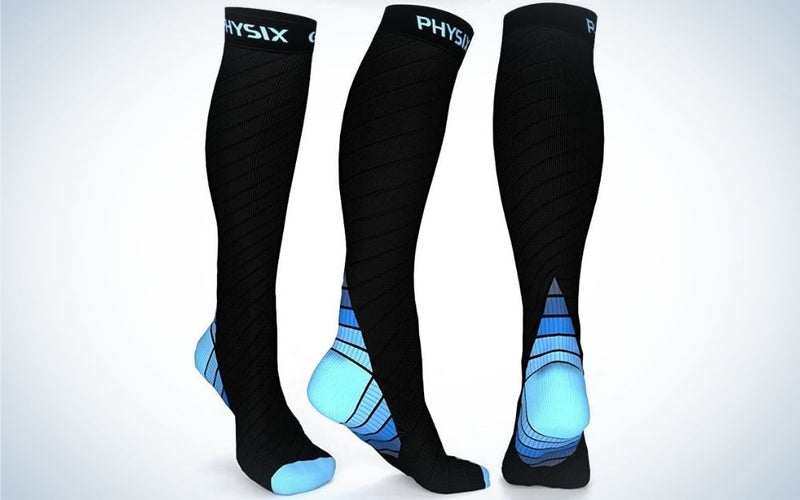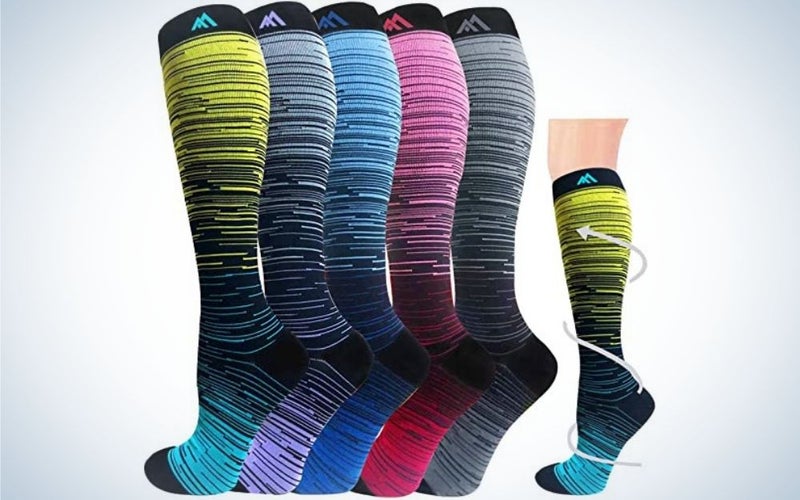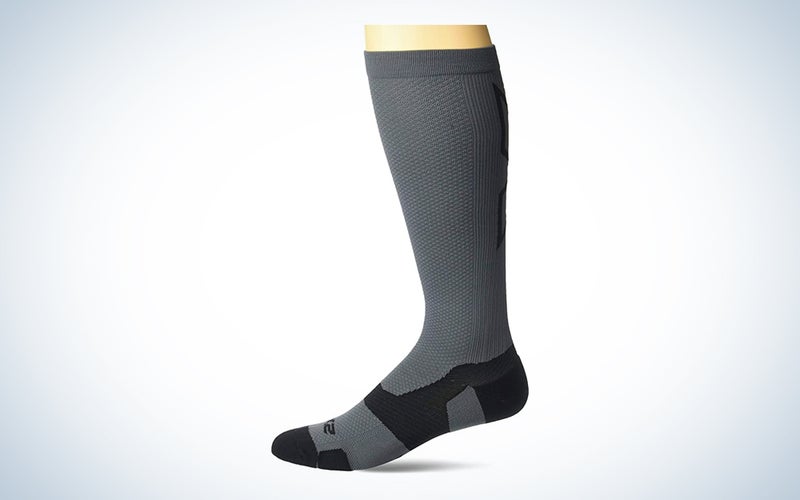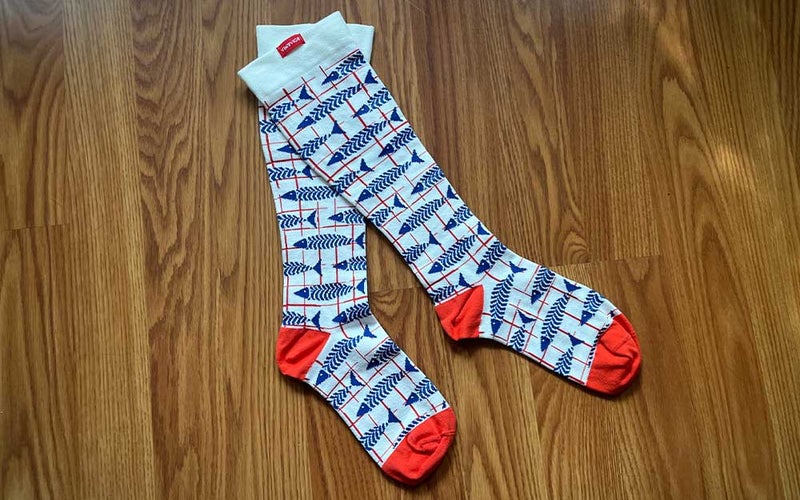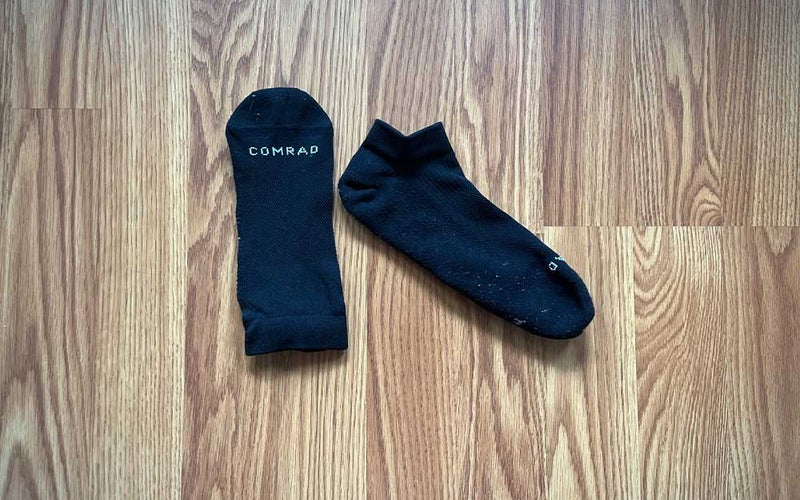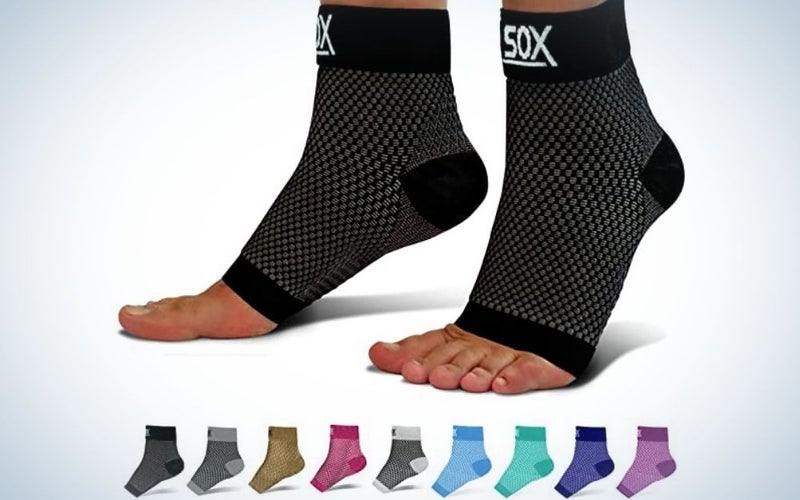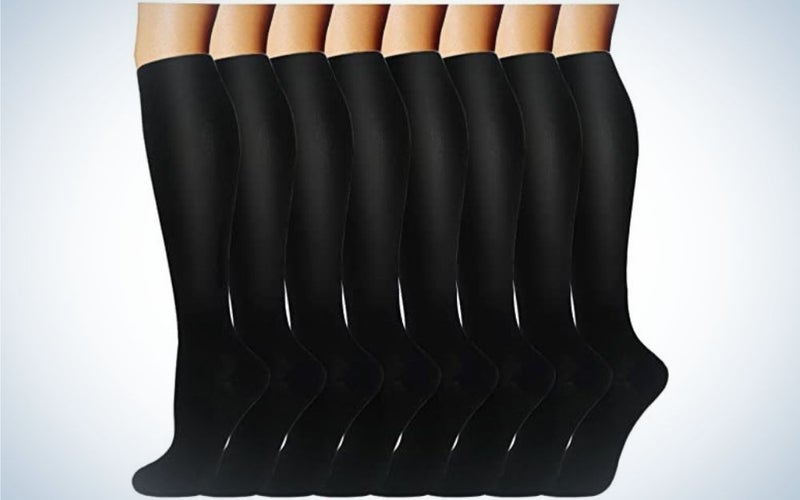We may earn revenue from the products available on this page and participate in affiliate programs. Learn more ›
Compression socks, also known as compression stockings or support stockings, gently squeeze and apply pressure to the legs to improve circulation while preventing and reducing swelling. These socks are a common part of post-injury or surgery recovery, but they’ve gained popularity among long-distance travelers and athletes for their recovery benefits, too. Whether you’re an athlete, recovering from an injury, or in an occupation that keeps you on your feet all day, pressure socks encourage blood flow and help you stay comfortable. However, compression socks come in different pressures, lengths, and sizes that determine how well they’ll work for your particular issues. We’ve rounded up some of the best compression socks for swelling, athletics, and general use to get your feet back in working order.
- Best overall: Sockwell Firm Compression Socks
- Best for men: Physix Gear Sport Compression Socks
- Best for women: Hi Clasmix Graduated Medical Socks
- Best for running: 2XU Vector Cushion
- Best design: VIM & VIGR Cotton Graduated Compression Socks
- Best ankle-length: Comrad Ankle Compression Socks
- Best toeless: SB SOX Plantar Fasciitis Socks
- Best budget: ACTINPUT Compression Socks for Men and Women
How we chose the best compression socks
Pressure socks should not cause pain or uncomfortably pinch the skin. A sock that causes numbness, tingling, or discoloration is too tight. To inform our judging and avoid these shortcomings, we conducted user testing with feet of all sizes, conducted extensive research, and reviewed critical reviews.
The best compression socks: Reviews & Recommendations
We picked a range of socks for various needs, from socks that help runners with performance and recovery time to those that alleviate pain from plantar fasciitis, arch and heel pain, and Achilles tendonitis. Any one of these picks should get your blood pumping and your feet jumpin’.
Best overall: Sockwell Firm Compression Socks
Sockwell
Why they made the cut: Sockwell’s Firm Compression Socks provide plenty of support while you’re on the job and still look stylish.
Specs
- Materials: Merino wool, rayon, nylon, Spandex
- Compression: 20-30 mmHG
- Machine washable: Yes
Pros
- Designed with graduated compression to reduce swelling
- Comes with arch support and cushioned sole
- Provides moisture-wicking and odor-control
Cons
- Not designed for athletic performance
If you’re looking for a compression sock you can wear all day, Sockwell’s Firm Compression Socks provide plenty of support while not looking like medical socks. Created to improve circulation in the legs of people who sit or stand all day, these socks are designed with graduated compression that minimizes swelling and cuts down on fatigue. They also wick away moisture and provide odor control thanks to the power of merino wool, and come in a range of colors from black to putty.
Best for men: Physix Gear Sport Compression Socks
Physix Gear Sport
Why they made the cut: These compression socks provide moderate pressure and come in a range of fun designs that will look great when working out.
Specs
- Materials: Lycra
- Compression: 20-30 mmHG
- Machine washable: Yes
Pros
- Great for extreme races
- Ankle cuff stays put
- Range of colors and designs
Cons
- Not particularly suited for the cold
The Physix Gear Sport Compression Socks provide 20-30 mmHg of pressure, which is adequate for running and other sports, as well as post-workout recovery. Their graduated pressure provides higher pressure through the feet and ankles and gradually decreases toward the top of the calf. These socks come in three sizes and include “stay put” cuffs to keep the sock in place. They also come in 12 colors.
Best for women: Hi Clasmix Graduated Medical Compression Socks
Hi Clasmix
Why they made the cut: These socks are designed to promote blood flow, discourage blood clots after surgery, and are also great for people working on their feet all day.
Specs
- Materials: Nylon, polyester, copper fiber
- Compression: 20-30 mmHG
- Machine washable: Yes
Pros
- Comfortable for all-day wear
- Encourages blood flow and circulation
- Moisture-wicking and breathable fabric that eliminates odor
Cons
- Striking design may not work with professional outfits
The Hi Clasmix Graduated Medical Socks are the best compression socks for women and fit shoe sizes 6 to 15.5. They feature graduated compression between 20-30 mmHg, enough for daily wear, athletics, or recovery. A copper-infused fabric helps prevent odors and wicks moisture for more comfortable wear.
Best for running: 2XU Vector Cushion
2XU
Why they made the cut: These athletic compression socks are specifically designed to improve runners’ performance with decreased recovery time and streamlined comfort.
Specs
- Materials: Nylon, Lycra
- Compression: 15-20 mmHG at base of foot (20-30 mmHG at ankle)
- Machine washable: Yes
Pros
- Support feet and legs
- Cushioning provides plantar fascia and arch support
- Lock-in technology reduces blistering
Cons
- Expensive
Runners, if you’re looking for compression socks to enhance performance without looking stodgy, the 2XU Vector Cushion Socks are a solid option. Designed with graduated compression, these socks for running increase circulation in your feet and legs to get more blood to your muscles. They come with arch and plantar fascia cushioning to absorb shocks and with technology that helps reduce blistering. That said, they’re an expensive pair of socks.
Best design: VIM & VIGR Cotton Graduated Compression Socks
Amanda Reed
Why they made the cut: If boring socks aren’t your jam, the fun patterns and colors of VIM & VIGR’s compression socks will fit right in with the rest of your color rainbow collection.
Specs
- Materials: Cotton, nylon, spandex
- Compression: 15-20 mmHg
- Machine washable: Yes
Pros
- Lots of sizes and colors available
- Ideal for all-day wear
- Cotton gives socks breathability
Cons
- Expensive
Socks are one of the ways we can show our personality without dressing too loud. It’s also titillating to have your own little fun secret hidden by the hem of your pants, only shown once you sit down. VIM & VIGR combines the whimsy of fun patterns like foxes, stripes, butterflies, and parasols with the practicality of compression. Its light compression—15-20 mmHg of it, to be exact—is perfect for traveling, exercising, sitting, standing, walking, and more. They’re soft, stretchy, and easy to put on. They’re also, at $38 per pair, expensive for this type of product.
Best ankle-length: Comrad Ankle Compression Socks
Amanda Reed
Why they made the cut: These ankle socks are designed with light compression and provide 360 degrees of support that cradle feet and aid recovery.
Specs
- Materials: Nylon, Spandex
- Compression: 15-20 mmHg
- Machine washable: Yes
Pros
- Designed with targeted compression zones
- Moisture wicking
- Comfortable
Cons
- Pill in the wash after a few wears
The Comrad ankle compression socks feature light, 15-20 mmHg compression in a side-specific design. Compression provides progressive pressure throughout the foot and ankle. They’re made of a moisture-wicking fabric that improves breathability for more comfortable wear, and feature extra toe and heel padding. That said, they’re not the best for cold weather, so you may also want to check out some heated socks. They feel just like a regular pair of socks, which is a plus for comfort. As you can see in the photo, the sock’s fabric pills after a few washes. It doesn’t affect their effectiveness, however.
Best toeless: SB SOX Plantar Fasciitis Compression Socks
SB SOX
Why they made the cut: These compression socks are designed to relieve pain and are created specifically for people with foot ailments such as plantar fasciitis, arch and heel pain, and Achilles tendonitis.
Specs
- Materials: Nylon, Spandex
- Compression: 15-20 mmHg
- Machine washable: Yes
Pros
- Provides arch support
- Moisture wicking
- Comfortable
Cons
- Not designed for cold weather
SB SOX Plantar Fasciitis Compression Socks feature compression and ribbing designed to follow the foot arch. The ribbing through the arch mimics the natural movement of the foot’s ligaments to provide better support. A thin heel lets you fit it under your regular socks without changing the fit of your shoes. Moisture-wicking fabric keeps the SB SOX cool even under another pair of socks. They come in four sizes and nine colors.
Best budget: ACTINPUT Compression Socks for Men and Women
ACTINPUT
Why they made the cut: If you’re looking for light compression, this eight-pack of socks provides great value for everyday use for people who stand all day.
Specs
- Materials: Nylon, polyester, elastane
- Compression: 15-20 mmHg
- Machine washable: Yes
Pros
- Comes in an eight-pack
- Moisture wicking
- Good value
Cons
- Not designed for foot ailments
The ACTINPUT Socks for Men and Women are made with 15-20 mmHG compression and come in eight-packs. These knee-high compression socks provide uniform pressure from toe to knee in two sizes. You get many options, from a pack of all black to nude, white, gray, and colorful patterned designs.
What to consider when buying the best compression socks
Let’s start with the most basic question—what are compression socks used for? Compression socks apply gentle pressure to the tissues beneath the skin of the legs. That extra pressure prevents fluid leakage and promotes fluid absorption. That generally means less swelling and further swelling prevention.
Pressure socks support vein and capillary walls, boosting weakening veins and valves. Even if your veins are perfectly healthy, blood can pool in your legs after long periods of sitting or time on your feet. Consequently, people who work while standing, walk all day, and travel for several hours at a time find relief from swelling with the added pressure of compression socks.
These socks come in different types and designs. For example, gradient or graduated compression socks apply higher pressure toward the toes, feet, and ankles, with less pressure through the calf. Ankle compression socks only apply pressure to the foot and ankle. Toeless designs make it easier to wear with regular socks for greater cushioning and comfort.
Pressure levels
Compression socks also come in different pressure levels, with socks available to the average consumer having light to medium compression. Pressure is measured in millimeters of Mercury (mmHg). People with certain health issues may require a specific sock pressure level recommended by a doctor, while others can just choose a comfortable level from the following:
- 15-20 mmHg (light compression): Daily wear, general sports, and travel.
- 20-30 mmHg (medium compression): Daily wear (especially for varicose veins and swelling), mild symptoms of discomfort, sports recovery.
- 30-40 mmHg (strong compression): Often recommended for blood clot prevention, medical recovery, or post-surgery.
Alleviating ankle swelling
Pregnancy, poor circulation, temperature fluctuations, and fatigue are only a few of the reasons your feet and ankles may swell. Capillaries, the very small blood vessels, help carry blood to the arteries and veins and back again. Their thin walls are easily damaged, leading to fluid buildup and poor circulation.
Pressure socks gently squeeze the legs, helping fluids reabsorb and blood flow more easily. These pressure socks also decrease the diameter of veins, increasing the velocity of blood flow and its volume. In short, they keep the blood moving and fluid from pooling. If swelling plagues you during and after a long airplane, car ride, or a long shift on the job, these socks may help.
Potential improved running performance
Here’s the deal: The jury is still out on the benefits of compression socks for running performance. Some studies have found a correlation between pressure socks and improved running performance and muscle fatigue, while others have found no difference.
It comes down to what you need and want the compression socks to do. If you have swelling when you run, which is pretty normal, pressure socks can definitely reduce fluid buildup in your feet and legs. That may or may not benefit your running time and recovery. Runners who travel long distances to get to their events, such as marathons or triathlons, may also reap the benefits of compression socks because they can reduce swelling due to prolonged periods of sitting or standing.
However, a fairly universal finding is that if the wearer believes the socks help, they report less fatigue, better circulation, and quicker recovery. The mental “race” can be just as difficult for runners as the actual race. If the socks work for you and help with recovery, you may want to consider a purchase.
Style of sock
Something that goes to your knees or beyond is too much sock for the occasion. In other cases, you may only need compression and extra support in the arch, heel, or low ankle. Ankle socks may offer a solution to any of the aforementioned issues.
These socks sometimes rise above the ankle bone, but many stay below this visible landmark. They have similar pressure levels as taller socks. Some of these designs feature targeted pressure through the arches or heels to relieve plantar fasciitis or support foot injuries. These socks also cover less surface area, making them a cooler option when temperatures rise.
FAQs
Q: How much do compression socks cost?
A pair of socks costing $15 each or more can quickly get expensive! However, you can get comfortable compression for much less, but you do have to let go of a few things. First, budget compression socks usually have less pressure. They’re more likely to fall in the 15-20 mmHg range. The quality of the fabric may be lower compared to higher-priced socks. For example, you won’t find moisture-wicking fabric among the less expensive designs. The seams may come apart quicker, too. That said, you can buy several cheap pairs for the price of a single pair of pricier designs.
Q: What does 15-20 mmHg mean for compression socks?
The 15-20 mmHg means the socks provide 15-20 millimeters of Mercury in pressure. It’s a measure of the sock’s tightness. Socks range from 15-40 mmHg, with 15 being the lowest pressure offered.
Q: Can compression socks lower your blood pressure?
Unfortunately, no, compression socks cannot lower or raise your blood pressure. They increase the velocity at which the blood moves in the lower limbs, but not enough to change your blood pressure measurements.
Q: What level of compression socks do I need?
The compression level depends on your activities, comfort level, and the socks’ purpose. To improve general circulation throughout daily activities, 15-20 mmHg socks usually do the trick. At 20-30 mmHg, athletes and those with medical issues like poor circulation or injury get more support. Socks at the 30-40 mmHg level are typically reserved for injury recovery. No matter the pressure level, the socks must be comfortable for you. They shouldn’t cut off circulation, cut into your skin, or cause skin discoloration.
Q: How many hours per day should I wear compression socks?
You can wear compression socks all day except when you’re showing or bathing. Then make sure to take them off at night, the National Health Service recommends.
Final thoughts on the best compression socks
- Best overall: Sockwell Firm Compression Socks
- Best for men: Physix Gear Sport Compression Socks
- Best for women: Hi Clasmix Graduated Medical Socks
- Best for running: 2XU Vector Cushion
- Best design: VIM & VIGR Cotton Graduated Compression Socks
- Best ankle-length: Comrad Ankle Compression Socks
- Best toeless: SB SOX Plantar Fasciitis Socks
- Best budget: ACTINPUT Compression Socks for Men and Women
Keeping your tootsies happy can help you stay on the move when your feet start to get tired. The best compression socks allow your blood to flow and reduce swelling without pinching or cutting off circulation. They also make great gifts. You may need a sock without toes or an ankle compression sock to support your arch. If you have a medical condition that requires a compression sock, talk to your doctor to determine the right pressure and sock style. These socks can express your personality with bright colors and patterns or blend in with your natural skin tone. If you need a pair, there’s a design out there that will work for you.
Why trust us
Popular Science started writing about technology more than 150 years ago. There was no such thing as “gadget writing” when we published our first issue in 1872, but if there was, our mission to demystify the world of innovation for everyday readers means we would have been all over it. Here in the present, PopSci is fully committed to helping readers navigate the increasingly intimidating array of devices on the market right now.
Our writers and editors have combined decades of experience covering and reviewing consumer electronics. We each have our own obsessive specialties—from high-end audio to video games to cameras and beyond—but when we’re reviewing devices outside of our immediate wheelhouses, we do our best to seek out trustworthy voices and opinions to help guide people to the very best recommendations. We know we don’t know everything, but we’re excited to live through the analysis paralysis that internet shopping can spur so readers don’t have to.
